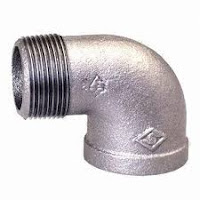Carefully examine all hydraulic
hose, galvanized pipe nipples and
fittings at regular intervals to confirm that the pipes are connected in such a
way that there is no chance of getting the pipe leak. It help to join one pipe
to another. Investigate any proof of
fluid loss or leaks. Check metal tubes for leaks, loose anchorage, scratches,
kinks, or alternative injury. Examine fittings and connections for outflow,
looseness, cracks, burrs, or alternative injury. Replace or repair defective components.
ensure the hoses don't chafe against each other and are properly secured and
clamped.

a. Replacement of Metal tube: Once
review shows hydraulic hose to be broken or defective replace the whole line
or, if the broken section is localized, a repair section could also be
inserted. In substitution craft hose, forever use conduit of constant size and
material because the original line. Use the previous conduit as a template once
bending the new tube, unless it's too greatly broken, within which case a template
may be made of soft iron wire. Soft atomic number 13 conduit (1100, 3003, or
5052) beneath half-inch outside diameter could also be bent by hand. For all
alternative conduit use a suitable hand or power tube-bending tool. Bend
conduit rigorously to avoid excessive flattening, kinking, or wrinkling. Little
quantity of flattening in bends is suitable, however don\'t exceed seventy five
% of the initial outside diameter. Excessive flattening can cause fatigue failure
of the hydraulic tube. once putting in the replacement conduit line it up
properly with the union half in order that it\'s not forced into alignment by
alteration of the coupling around the bend.
b. Hose couplings and Tube Connections, rolled threaded nipples and several tube connections are made using
flared tube ends with standard association fittings: AN-818 (MS 20818) nut and
AN-819 (MS 20819) sleeve. In forming flares, cut the tube ends sq., file sleek,
take away all burrs and sharp edges, and completely clean. The conduit is then
increasing victimization the right 37-degree aviation flare forming tool for
the scale of conduit and kind of fitting. A double flare is employed on soft
atomic number 13 conduit 3/8-inch outside diameter and beneath, and one flare
on all alternative conduits. In creating the connections, use hydraulic fluid
as a material so tighten. Over tightening can harm the tube or fitting, which
can cause a failure. Under-tightening might cause discharge that might end in a
system failure.





